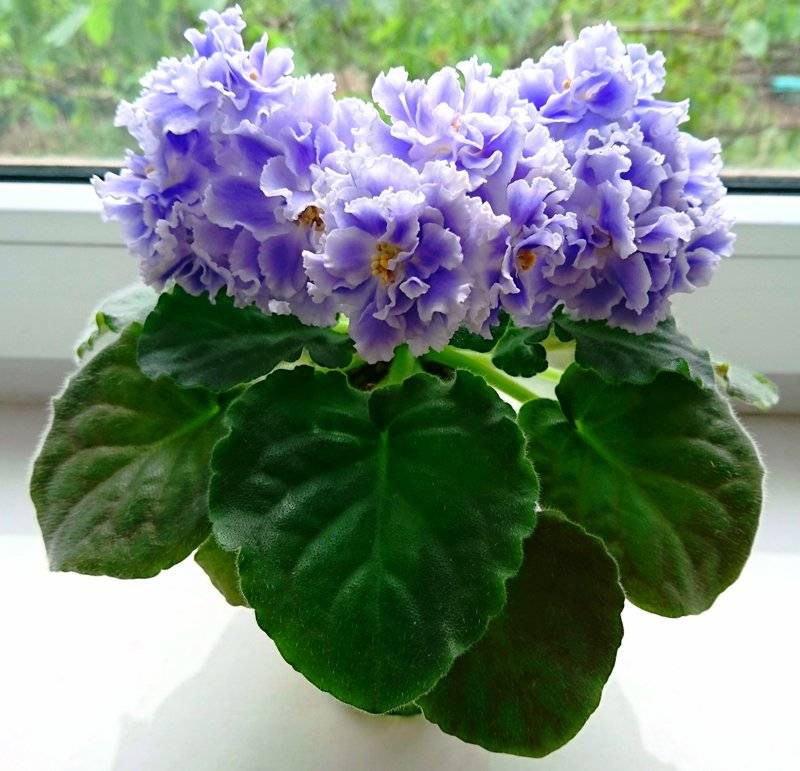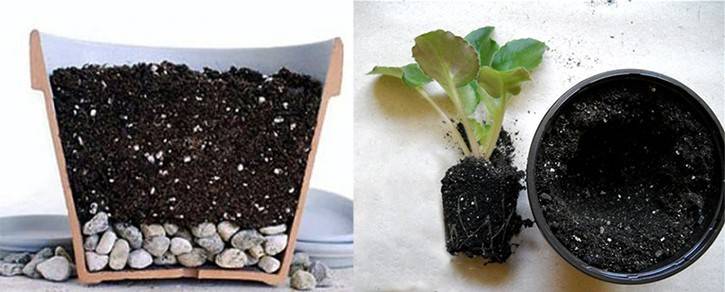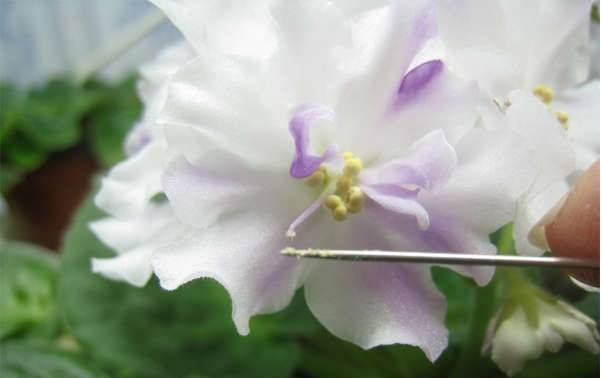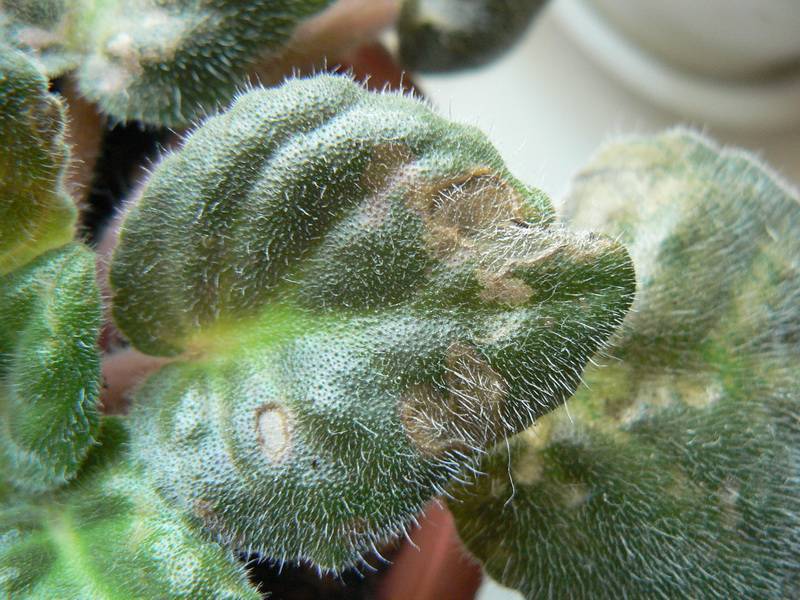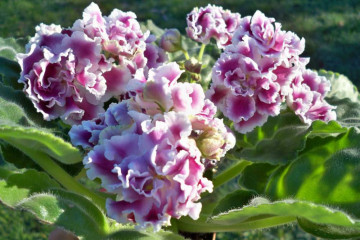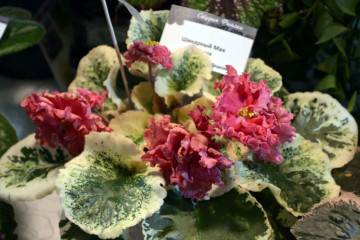Violet Blue Mist - description and characteristics of the variety
Content:
Varietal Saintpaulia Blue Mist looks so attractive that many growers are eager to get this plant in their indoor collection. The flower is undemanding to care for, and it is not so difficult to grow it at home, creating the necessary conditions.
What does a violet Blue Mist look like?
The homeland of the violet is considered to be one of the provinces of East Africa, for which it is called the Uzambara. Another name - Saintpaulia, was given in honor of Baron Saint-Paul, who was the first to collect the flower seeds and give them to botanists.
The leaves of this variety are velvety, oval in shape and a heart-shaped rounding at the petiole. The outer part of the leaf can be colored in various shades: from light to dark green. The lower surface is light green or lilac. Large sky-blue flowers of a spherical shape with a lighter corrugated edge are collected in lush inflorescences and raised above the rosette.
Features of caring for a violet Blue Mist Moreva at home
Violet Blue Mist does not require special care that is different from other varieties. However, it is important to create the right conditions for a healthy plant and long lasting flowering.
Temperature
The optimum air temperature should be maintained within 17-23 ⁰C. Possible critical drop is no more than 10 ⁰C, otherwise the flower will die.
Lighting
The Blue Mist cultivar needs a place with diffused sunlight. A window sill on the east side of the house is best. If necessary, in the winter season, the plant is placed under phytolamps or moved to a lighter window.
Watering
Water for irrigation violets Blue Mist is pre-defended. The flower should be irrigated using a watering can with a thin spout so that moisture does not get on the leaves and petals, otherwise the plant may rot. The procedure is carried out 2 times a week, avoiding waterlogging.
Spraying
In no case should you spray Saintpaulias, as a delicate flower may die from this.
Humidity
With the onset of summer heat or in winter with hot radiators, the air in the room becomes drier. At this time, experienced florists recommend placing pallets with pebbles near the violets and pouring water there.
Priming
The soil mixture for the Blue Fog variety must be loose and water-absorbing. You can prepare the substrate yourself by mixing the following components:
- turf soil - 3 parts;
- peat - 5 parts;
- sand - 1 part.
You can also buy a special ready-made soil for violets and water it at home with a weak solution of potassium permanganate. Be sure to place drainage on the bottom of the pot.
Top dressing
In spring and summer, varietal violets are fed 2 times a week, using a mineral composition for flowering plants.At the same time, it is important to follow the instructions on the package, since not only a deficiency, but also an excess of fertilizer nutrition will have a bad effect on the flower.
When and how it blooms
With proper care, violets bloom almost all year round. The Blue Mist variety is also characterized by long and abundant flowering.
Types of flowers
Blue Mist buds and flowers can range in color from light blue to deep blue.
Flower shapes
The flowers of this variety consist of many double petals arranged in tiers and often forming luxurious balls. The edges of the petals are strongly corrugated, which is why the core is almost invisible.
Flowering period
The blooming period of the Blue Mist can be up to 10 months a year. Withered inflorescences give way to new ones, and a lush hat of flowers and buds constantly keeps above the rosette.
Changes in care during flowering
During the flowering period, the plant needs regular feeding to compensate for the nutrient consumption. It is not recommended to change the lighting and watering mode.
Pollination
In nature, pollen is carried from plant to plant by insects or wind. When growing hybrid violets, the florist has to pollinate the plants himself so that pollen does not fall on one flower from another and varietal characteristics are not lost. Another option is deliberate crossing of different varieties in order to obtain a new plant of an unusual kind.
Pollination techniques
There are 3 main pollination techniques:
- the insect technique, in which pollen is transferred with a needle, soft brush, cotton swab, or clean finger;
- wind technique, when pollen is collected on a sheet of paper and gently blown onto the stamens of the mother flower;
- the technique of animals, in which the flowers of one plant touch the flowers of another, as happens when an animal passes through the thickets of grass.
All of these options, which are used to pollinate violets at home, are equally effective.
Pollen application method
Pollen from the surface of the stamens of the violet-papa is transferred to the moistened surface of the pistil.
Pollination tools
It is most convenient to use when pollinating with a disposable cotton swab. At the same time, you should not mix pollen from different "dads" in order to avoid unpredictable results. After completing the procedure, the sticks are discarded.
How the Blue Mist violet reproduces
Knowing what violet seeds look like, which look more like grains of sand, it is not difficult to understand why cuttings are considered the most reliable way of plant propagation. In addition, delicate seedlings often die, since it is almost impossible to create the required conditions for them.
Propagating a violet, a healthy leaf is cut off at an angle, placed in water at room temperature and placed on a window with diffused light. After 45-60 days, cuttings with regrown roots are transplanted into the soil.
Transplant after purchase and during reproduction
The newly purchased violet should be transplanted into a suitable substrate, since the store one is not suitable for long-term cultivation. The procedure is repeated 2 times a year using the transshipment method.
In the event of soil acidification or the appearance of a disease, the soil must be completely replaced. In this case, the state of the root system should be carefully checked.
Possible growing problems
Problems with saintpaulias arise only when the conditions of care are violated. Any deviations can be found out by carefully observing the state of the flower.
Leaf problems
The leaf plates of violets can turn yellow or become stained. This means that the plant needs a transplant, it is too lit, overfed with fertilizers, or has been attacked by harmful insects.
Pests
Most often, the violet is attacked by ticks, scale insects and nematodes. When there are not too many pests, you can get rid of them with the help of acaricides. If you start a flower, then it will no longer be saved from breeding insects.
Diseases
Typical diseases of violets are gray rot, powdery mildew, rust and late blight. The flower should be treated with the appropriate preparation as soon as possible, otherwise it will have to be thrown away.
Signs of improper care
Irregularities in care may cause Blue Mist flowers to shrink or become dull, leaves curling, withering, yellowing or drying out. In some cases, there may be a lack of flowering. Faced with such problems, it is important to find out the cause and eliminate it as soon as possible.
Thus, it is quite easy to grow the Blue Mist variety at home. Compliance with the rules of care allows you to get a beautiful lush plant that blooms almost continuously.
